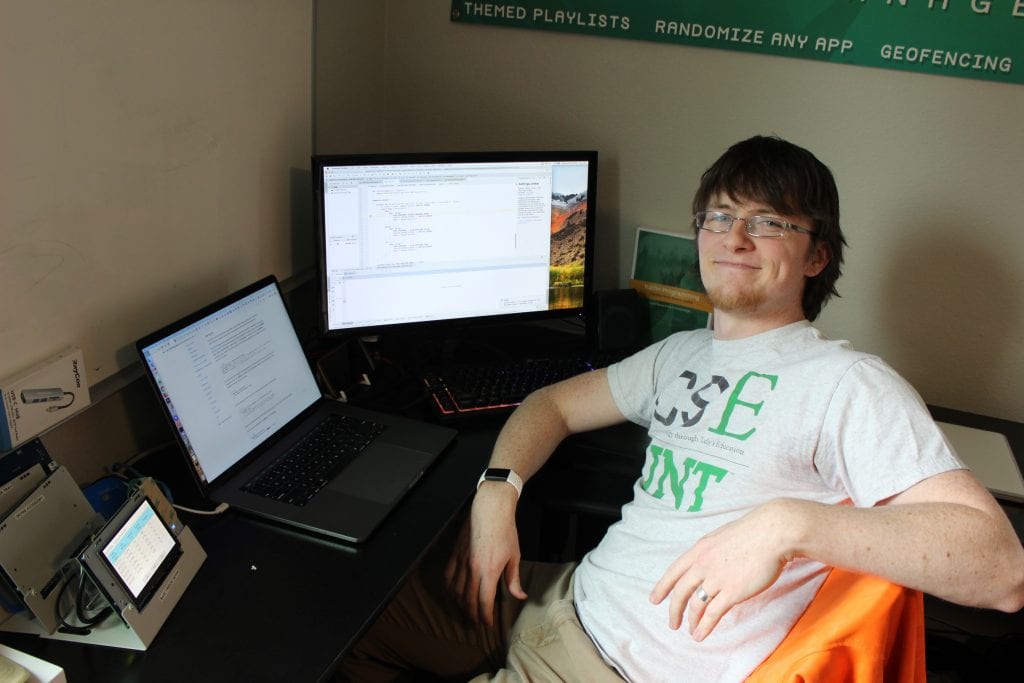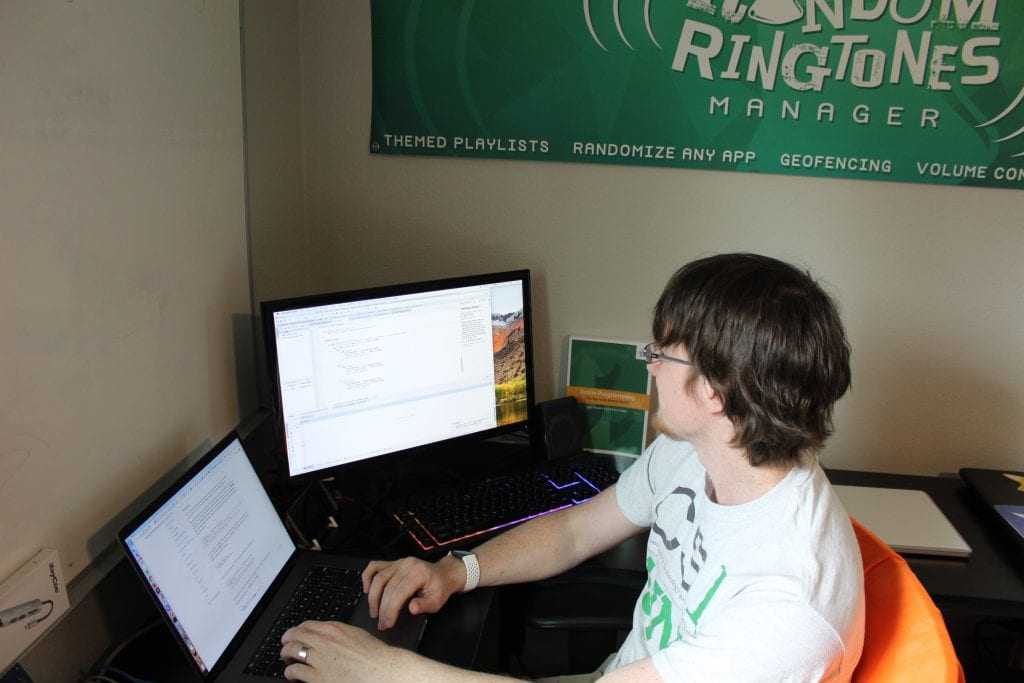Eleven Takeaways From Talking to an IT Professional

Brett McCormick in his home office.
The National Convergence Technology Center (CTC) recently launched a video series entitled “A Day in the Life” in which IT technicians and executives offer students their perspectives on the IT workplace. The hope is that hearing directly from a successful IT worker (rather than their professor) in a video interview may deliver a stronger, lasting impact on students.
The second subject of “A Day in the Life” is Brett McCormick, a graduate from Collin College and the University of North Texas who now works from home as an Android developer for Big Nerd Ranch.
Below are eleven quotes from Brett’s interview that might make an impact on IT students when considering the reality of entering the IT workforce. Click here to watch Brett’s interview in full. The YouTube description offers a “table of contents” with timestamps if you’re interested in specific questions.
- One thing that can make a hard day at work is if the teams don’t communicate well. A lot of times a communication breakdown doesn’t really manifest itself until lots of little communication breakdowns have happened… What ends up happening is that the understanding is branching off so significantly that by the time they get to the finish line, both teams say “We’re here at the finish line. How are we doing?” And then it finally comes to a head: “I thought this was the finish line.” And the other team thought, “[I thought] this is the finish line.”
- There are engineering disciplines and then there are non-engineering disciplines that all work together in the same client work or if it’s internal projects it’s everything. So everyone needs to know how to effectively communicate with each other and that’s where soft skills come in. You have to learn how to break down some sort of complex idea from your engineering standpoint – or the Android background in my example – and be able to communicate that with someone who might not know as much about it as I do.
- I always thought I was going to do Cisco networking or voice over IP management. Now I’m doing Java programming and Kotlin programming. So you never know what’s coming next. You don’t quite know your future, even though you might have the most solid five-year plan ever. Things can change.
- One piece of advice I might give is be willing to take chances.

- [The University of North Texas has] a set of courses at the end called the “capstone” course that lasts two semesters. During [those] two semesters, my team and I put together a project. We worked with Denton County Transit Authority to build an Android app, and the associated backend for it, for tracking where their buses are at any given time. Which I used all the time. I needed to get to the engineering building or on campus from wherever I was, and the most annoying part about it was I didn’t know where the buses were at any given point. There was a schedule for the buses, and I would check the schedule and my watch, and I was there, and the buses weren’t. A lot of us had the same frustrations so we worked directly with Denton County Transit Authority and they were gracious enough to work with us… By the end of it, [the app] was enough to impress my first employer to offer me an internship and then after I graduated from UNT they offered me a full-time position. That’s where I started. I was at Bottle Rocket for six years.
- We have hired people that are not traditional students.I am a traditional student; I have a four-year degree and then I used that as some of my ammunition for applying for jobs. But we’ve definitely hired people that came instead from other backgrounds. We’ve hired students that went through Udacity tracks… And sometimes those candidates end up being very solid employees and end up leading projects.
- My first contact with Bottle Rocket while I was in college was with an employee that was at a hackathon… [She] connected me with the recruiter at Bottle Rocket, and that’s where the whole thing started.
- There will be plenty of things that you don’t know how to do…Someone can ask something that you don’t immediately know the answer to, but you know how to find it. So just be comfortable with the unexpected.

- When I first started in Android development, one of my first [side] projects was an app that would change the ringtones on your phone.And I still maintain that project to this day. It has been just sort of a tech demo for things I know how to do in the Android world…. Originally it was something I put on my resume… Interviewing at Big Nerd Ranch, for example, they asked for a code sample of something I’d written in the past, so I showed them something from my ring tone.
- I’ve run several interviews for Bottle Rocket and for Big Nerd Ranch. In both cases it’s important to… figure out if they’re in this for the right reasons or if they’re in this because they were forced into it or they don’t know if this is for them or not… That’s part of what an interview is looking for: are you in this for real or are you not?
- My working from home started when I joined Big Nerd Ranch.It is much different obviously than a traditional office set-up. It’s a lot more self-managed working in an office like this… A day for me varies. It can start anywhere between 9am local time and 10am… I haven’t memorized where everybody is in the company but as far as my team goes, we have two in the Central time zone and two in the Eastern time zone. You have to learn a lot of time zones when you’re working distributed. We have “all hands” meetings every other Tuesday and every Wednesday. And that is driven by the company. We have team meetings for my client work. Every two weeks we have retrospectives. We also have “sprint planning” – that is where you collect the work available in the project and you break it down based on how much work you think it’ll take. Then you decide which ones that you can get done in the next “sprint” – periods for that vary but it’s typically two weeks at a time. The product owner or the client can prioritize which ones they’d like you to work on.
